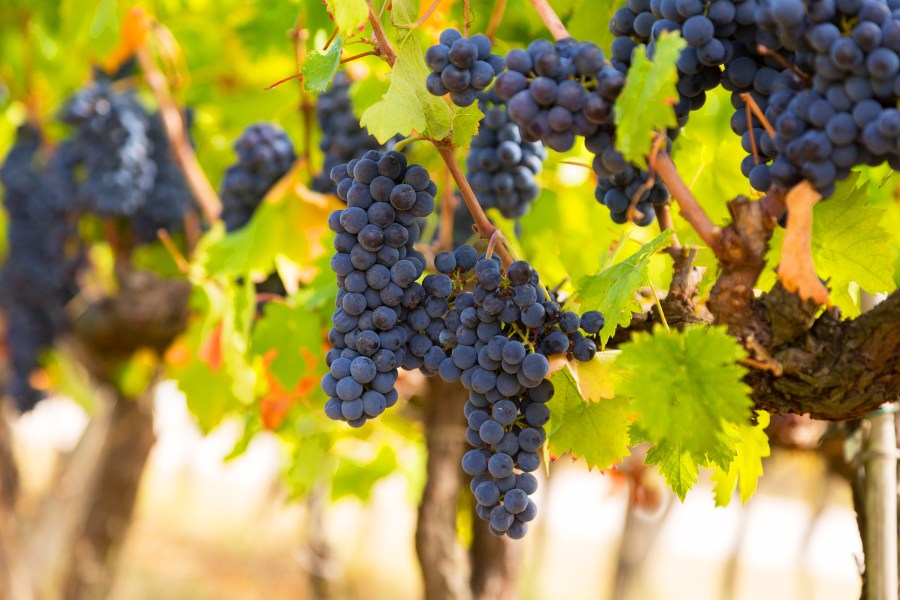One of the biggest factors influencing our ability to take large crops of good quality grapes through to harvest is late season nutrition.
Alongside favourable weather and robust disease control, optimising nutrition is crucial for maintaining healthy canopies with the photosynthetic capacity to supply developing bunches with everything they need, both for yield and quality. Skimping on the canopy now risks undoing all the hard work that has gone before.
Start with data
Tailoring nutrition to the needs of individual situations is by far the most effective approach, so growers should base nutritional strategies on the results of petiole or leaf analysis, ideally done earlier in the summer. Knowledge of site history and soil status is also useful.
It is not too late to get leaf samples tested, so this may be worthwhile if not done already. Relative to the value of the crop, leaf analysis is a very small investment that can have significant benefits.
Focus testing on sites or areas that have previously underperformed; those where potential deficiencies have been seen; or where vines are relatively recently established and may not yet have a well-developed root system. Sites carrying big crops are another to prioritise for testing.
Occasionally, leaf analysis may not show any obvious issues, despite crops not performing as expected, so in such cases it is necessary to delve deeper, looking at other physical soil conditions and biology.
Feeding canopies
Magnesium, iron and nitrogen are three key nutrient deficiencies that can inhibit chlorophyll formation, and low levels of the first two commonly show up on tissue testing. Nitrogen deficiency is not usually an issue on deeper, richer soils in wetter parts of the country, however it can be a problem in some areas, especially thinner soils in the drier south east.
For magnesium, there are two main treatment options, the most popular being magnesium sulphate, which is low cost and proven to work well. Another option, where growers require additional nitrogen, as well as magnesium, is magnesium nitrate, which offers a more plant-available nutrient form than sulphate.
Urea is another effective nitrogen source, while a more plant-available option would be products based on amino acid feeds, such as Bridgeway or Megafol, which can be particularly useful during periods of stress, or when there is a large energy demand on vines.
For iron, EDTA chelate forms are cheapest, but they are generally not as plant-available or effective as iron metalosate, which supplies amino acid chelated minerals in a ‘softer’ form that can be used immediately by plants. Note that for ground applications, EDDHA iron chelates are used, but these are not particularly light stable, therefore are best applied in winter, or via trickle irrigation, so nutrients can be washed straight into the soil.
Feeding grape quality
From veraison onwards, the nutrition focus generally switches from feeding the canopy, to bolstering grape quality.
Two nutrients are pivotal in this respect; potassium supports strong fruit fill and Brix accumulation, while yeast-available nitrogen affects fermentation and the wine’s flavour profile. A high potassium:nitrogen ratio also helps reduce Botrytis risk.
Potassium can be applied in various forms, including non-chlorinated pure foliar products, such as PureTech Potassium, or as potassium sulphate. For those wanting extra nitrogen, potassium nitrate is another option. Metalosate potassium is also available, and while experience is limited, it may be considered in future.
Other beneficial nutrients between veraison and harvest include: calcium, for skin strength; magnesium, to reduce bunch stem necrosis; boron, to improve berry shape, size and sugars; zinc; and iron, which can also improve quality.
Support floral initiation
Finally, it is worth noting that one major reason why many crops have done so well thus far, is due to the higher light levels and warmth experienced during flower initiation last summer.
Fruitful buds start forming in leaf axils (where the leaf stalk meets the growing shoot) around a year before vines flower, when cells at the tip of developing tissue form primordia – the name given to the organ or tissue when at its first recognisable stage of development.
Light and warmth facilitate this process, and while we cannot influence the climate, we can manage canopies to ensure sufficient light reaches the replacement canes growing from the crown, destined to be next year’s cropping canes. Good flower initiation for 2024 is reliant on those canes getting light now, so make sure they are not being shaded out by overly dense canopies.
For more like this, sign up for the FREE Vineyard newsletter here and receive all the latest viticulture news, reviews and insight




